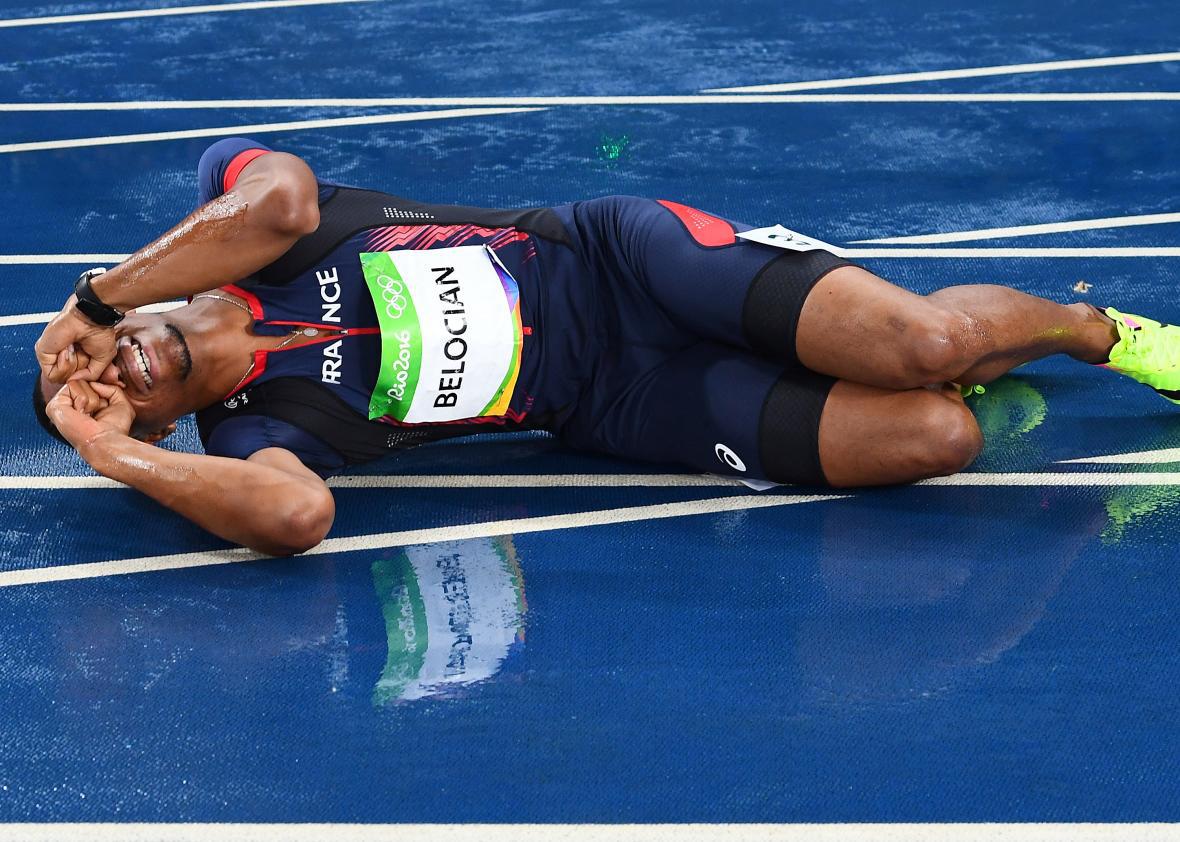If you’re in Rio de Janeiro and you see French hurdler Wilhem Belocian, please offer him a hug. The 21-year-old’s first-ever Olympic race ended before it began on Monday night, when he false-started in his first-round heat in the 110-meter hurdles, and was thereby disqualified. One strike and you’re out; them’s the rules.
It was heartbreaking to watch, let alone, you know, live through. Worse still for the Frenchman is that as recently as the 2008 Games in Beijing, he would have had a second chance. For many years, the International Association of Athletics Federations disqualified sprinters after their second false starts. At the 1996 Olympics in Atlanta, this rule felled reigning 100-meter-dash gold medalist Linford Christie, who was DQ’ed before having the chance to defend his title.
If you false-start twice in a single race, you deserve to get the boot—sorry, Linford Christie. But much harsher rules came down in 2003, when the IAAF penalized the whole field if any runner false-started. If one sprinter jumped the gun, that meant the next person to do so would automatically get booted.
While neither of these rule changes was ideal, that 2003 adjustment in particular caused major problems. Suddenly, sprinters had a sneaky way to get into their opponents’ heads. Some runners, like the United States’ Justin Gatlin, have particularly explosive starts, and some are slower out of the blocks. If a slower starter wanted to spook the faster ones, he could intentionally false start, and many did.
While within the rules, this was annoying for fans and for racers. As a consequence, in 2010 the IAAF implemented a one-and-done rule. Usain Bolt, for one, applauded the zero-tolerance, false-start-and-you’re-out rule change after it was announced in 2010. The rule created an uproar, though, after Bolt was disqualified at the 2011 world championships. That remains the only Olympic or world championship final since 2008 that the Jamaican didn’t win.
That 2010 rule decreed that any movement on the blocks—even a flinch—was grounds for dismissal. To be clear, Bolt did more than flinch in 2011—he started to sprint too early. Nevertheless, under pressure to loosen up ahead of the London Games, the IAAF made flinching OK. That remains the case in 2016. Now, a runner must leave the starting blocks to get disqualified.
The one-and-done rule has led to a dramatic shift in sprinters’ behavior. In the years before the rule changes, false-starting was commonplace on the world’s biggest stages. At the 2007 world championships, there were 26 false starts. At the 2008 Olympics, there were 33. At the 2009 world championships, there were 25. At the 2011 worlds, the first major international meet after the one-and-done rule was implemented, there were only 10 false starts. The IAAF says it doesn’t have data on false starts after 2011, but I’ve Googled around and searched news databases and haven’t found any false starts at the 2012 London Games. (If you know of any, email me.)
The disqualification of Wilhem Belocian, then, was a rare sight indeed. Olympians who spend their lives training for one big moment only to mess up under bright lights can’t console themselves by saying there’s another game tomorrow. For sprinters in particular, a mistake made in a fraction of a second can lay waste to a lifetime’s worth of planning. It’s not fair. The alternative systems were less fair for the vast majority of athletes. The fact that pain like Belocian’s is now so rare means the system is working. I imagine that’s little consolation, however, to the 21-year-old hurdler from France.
